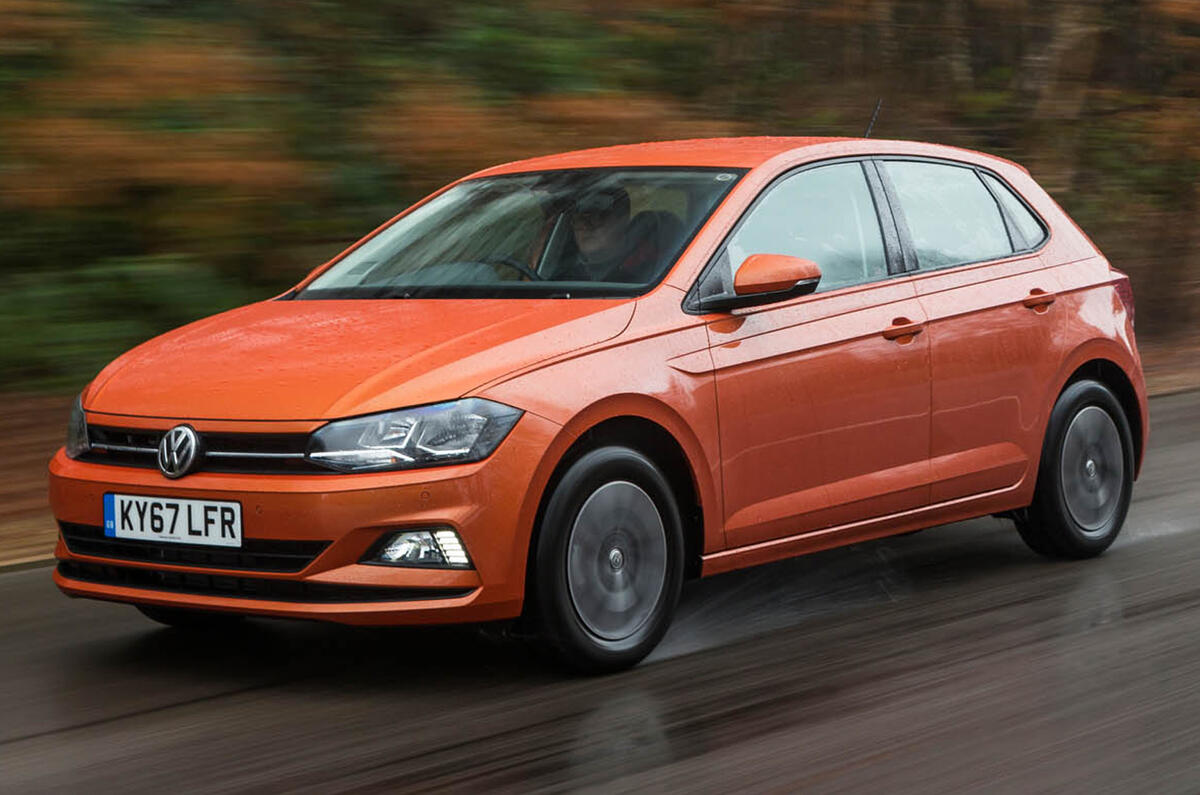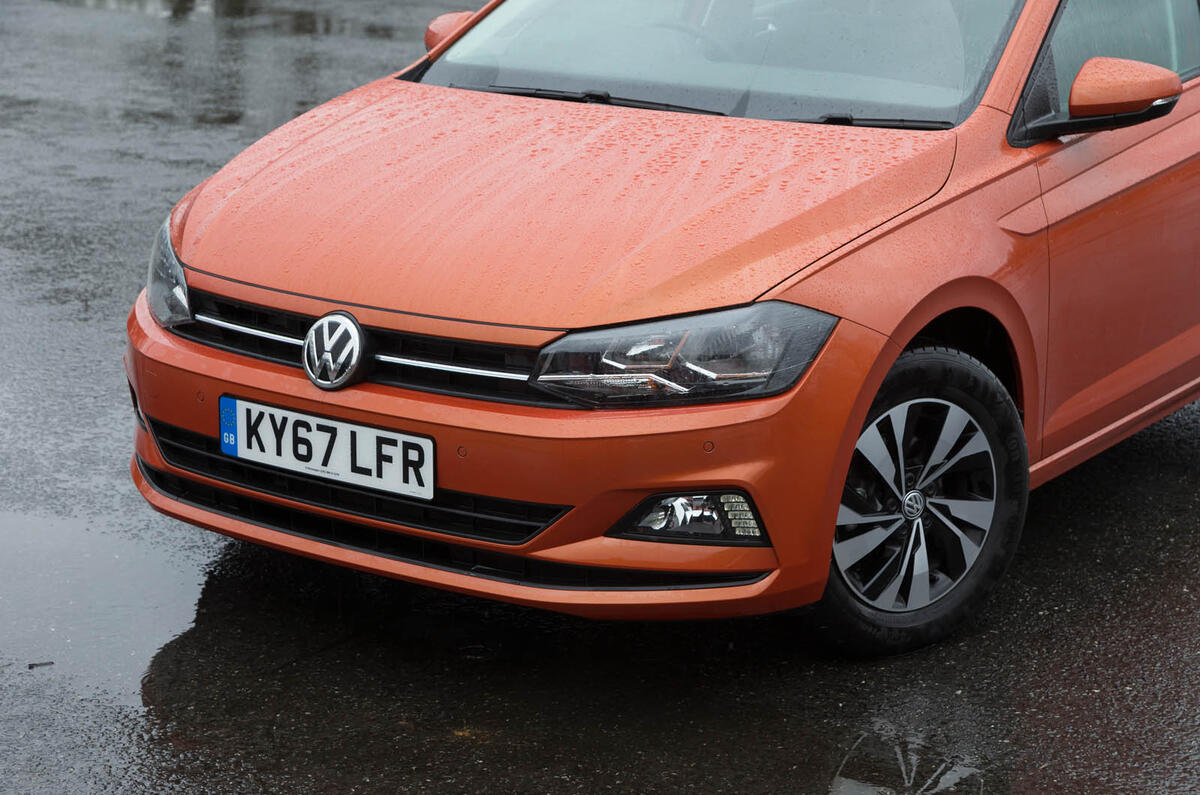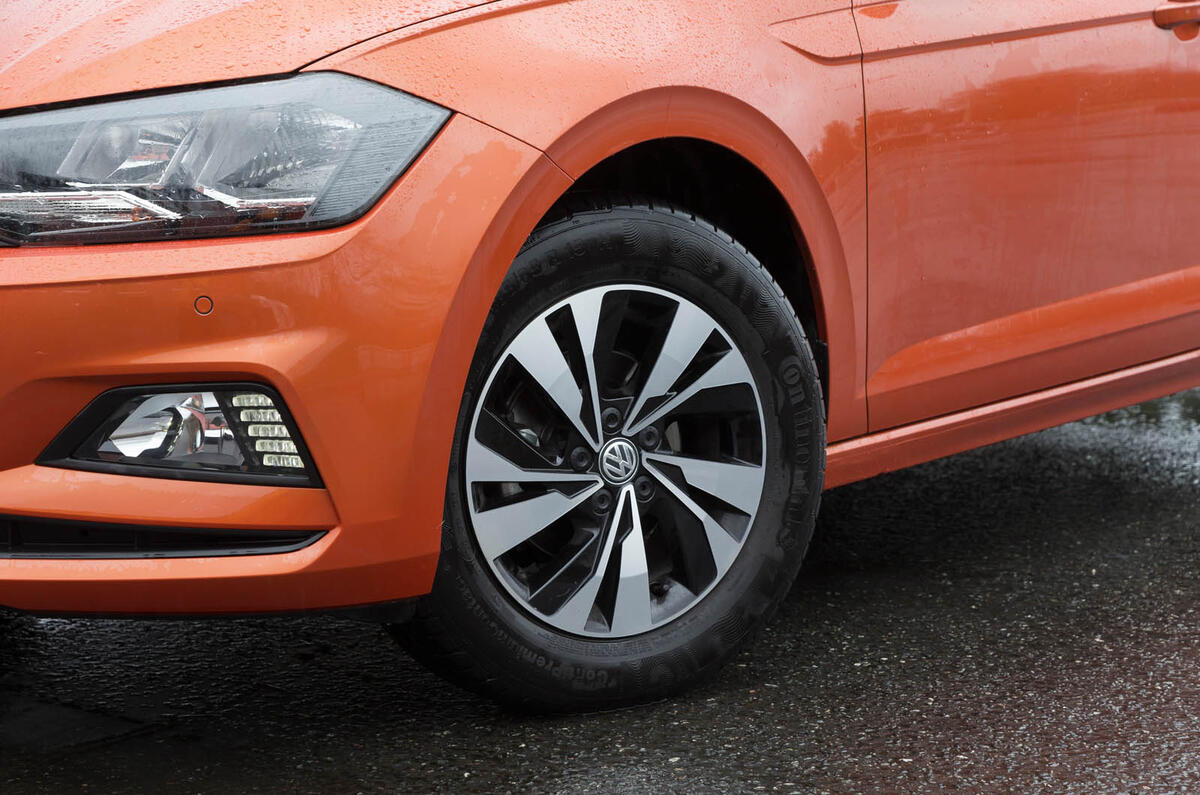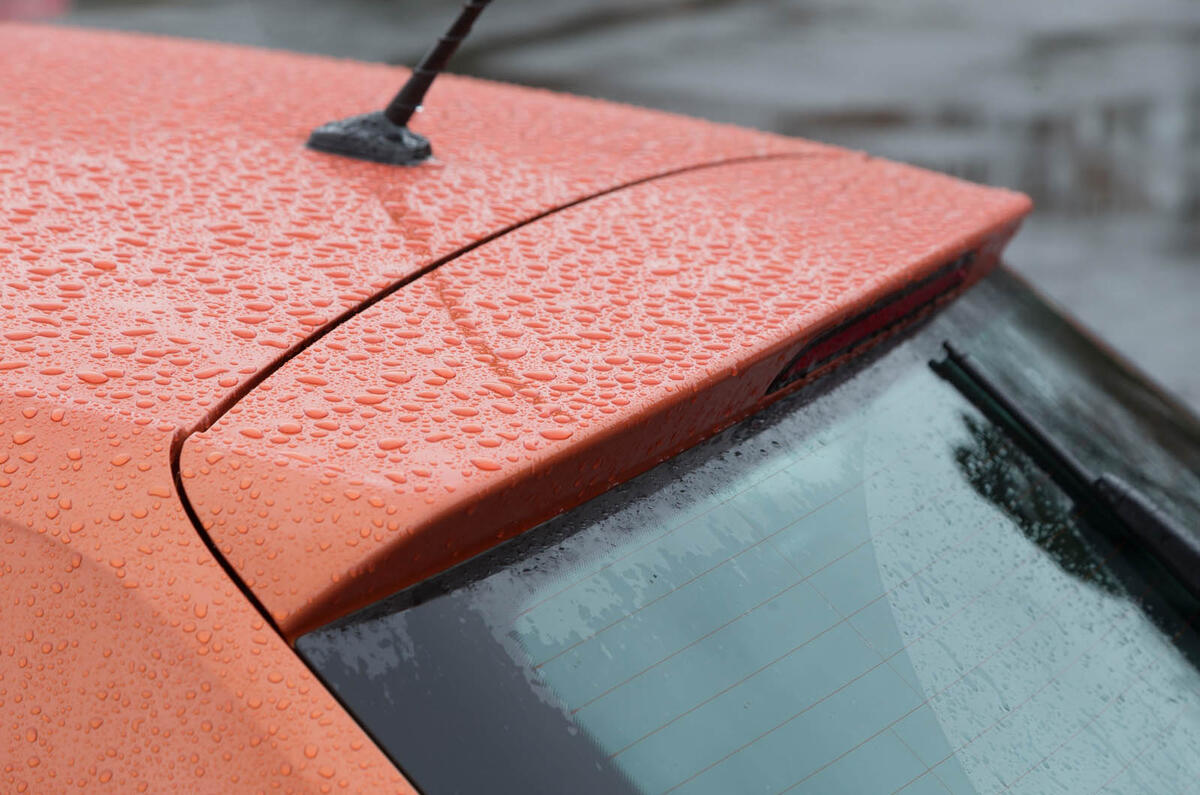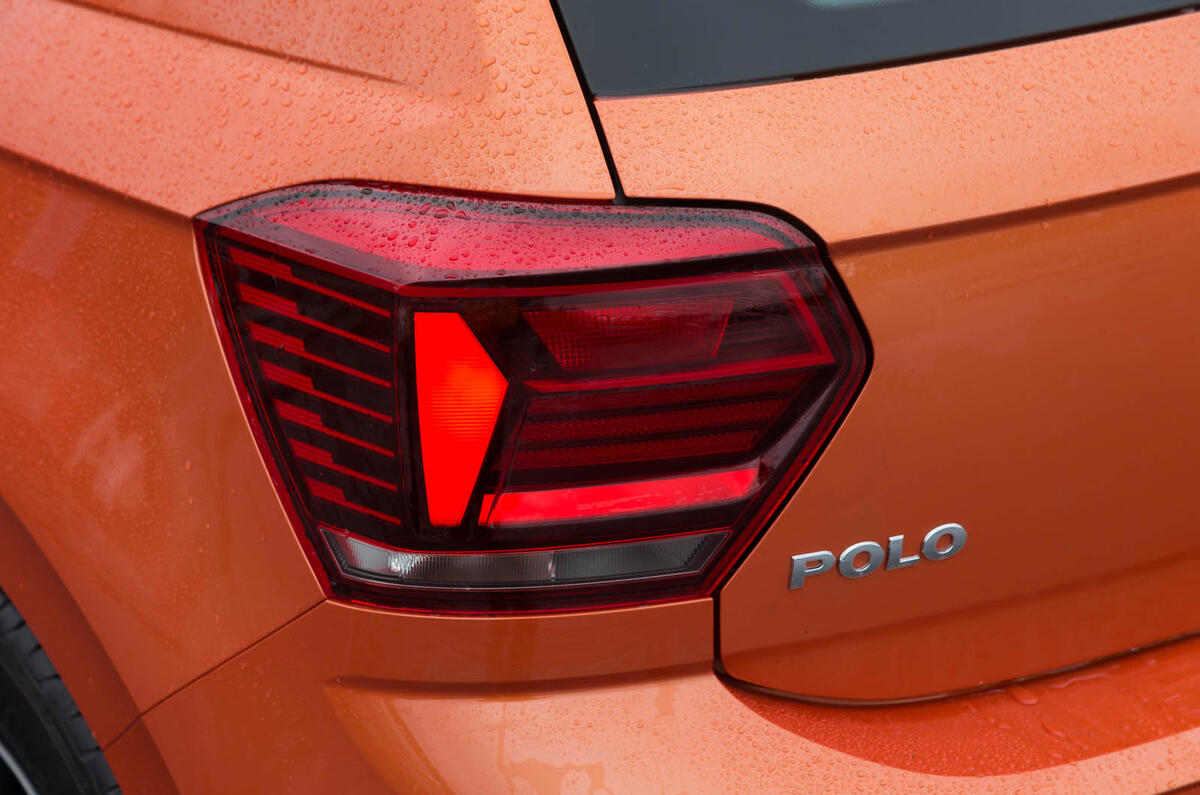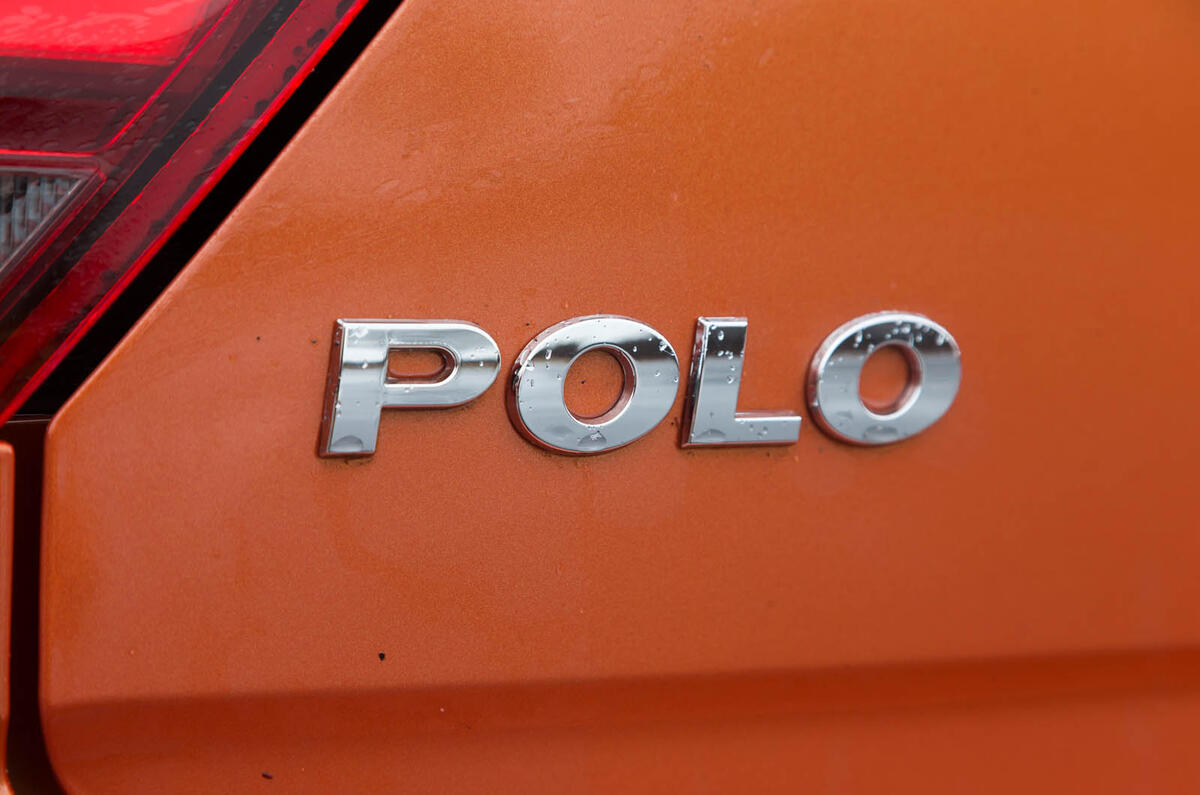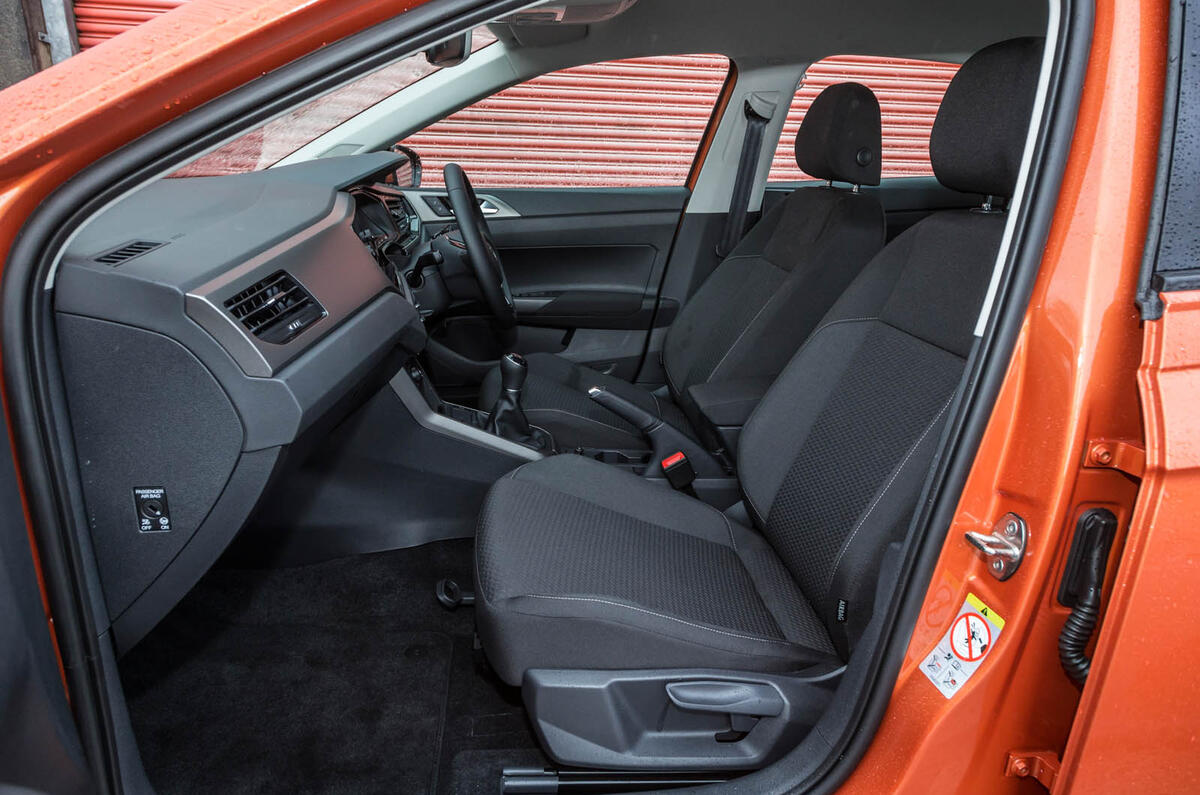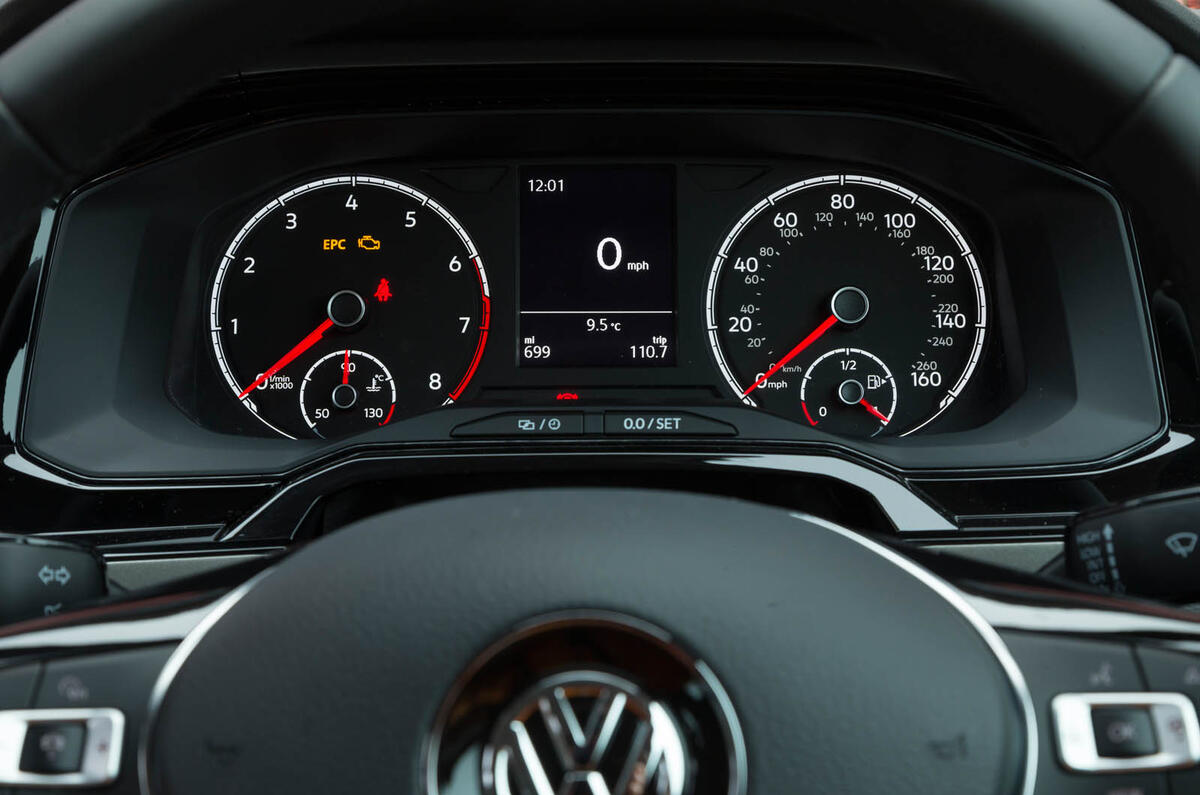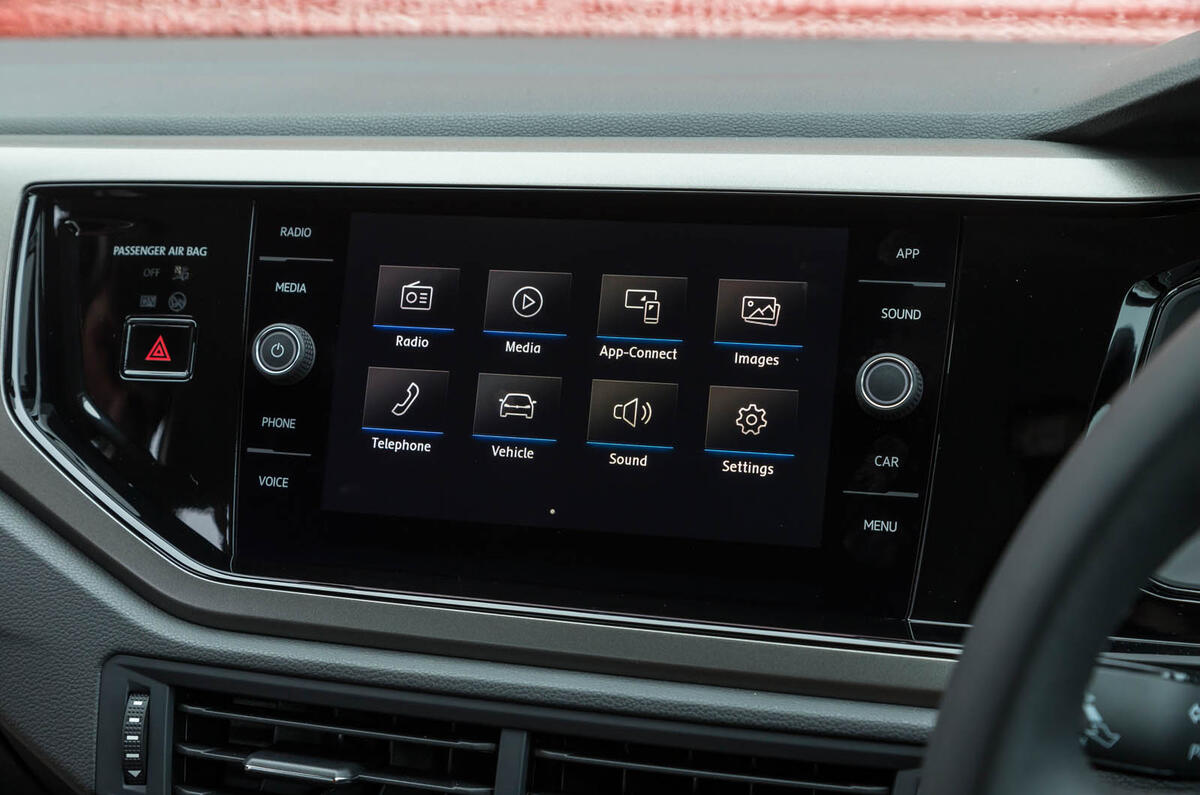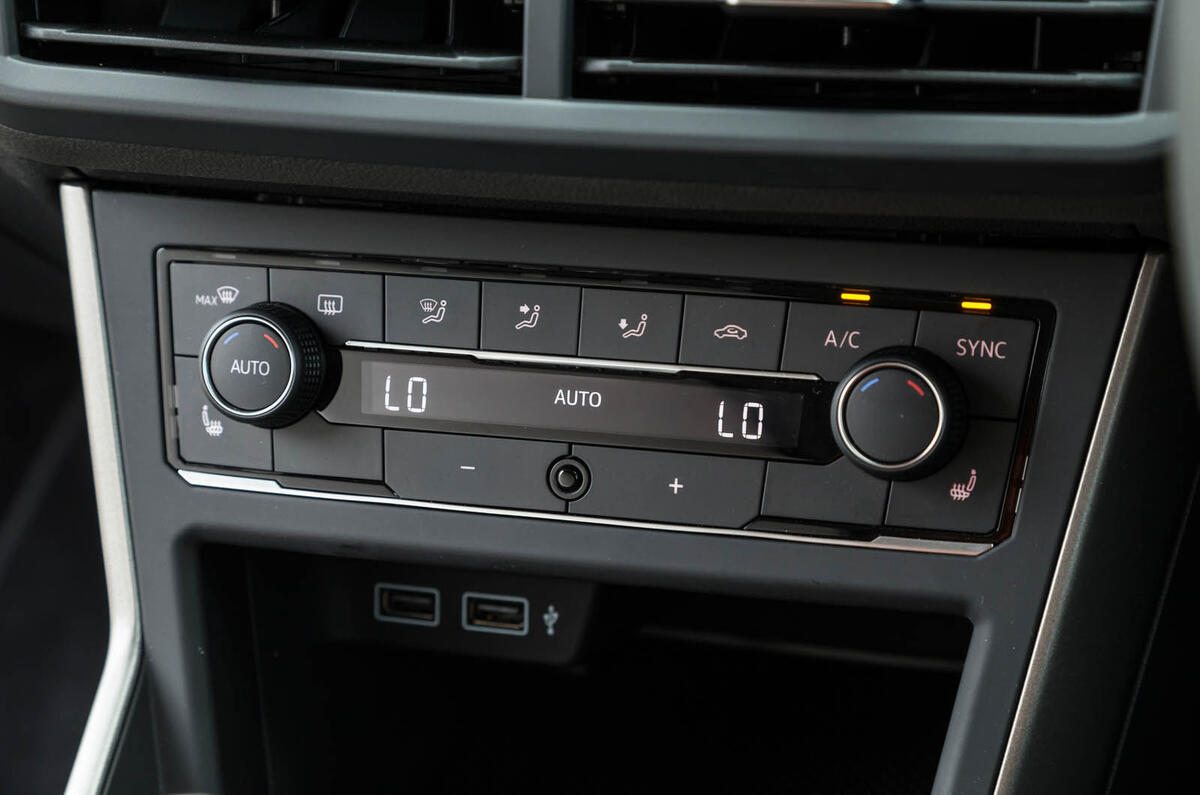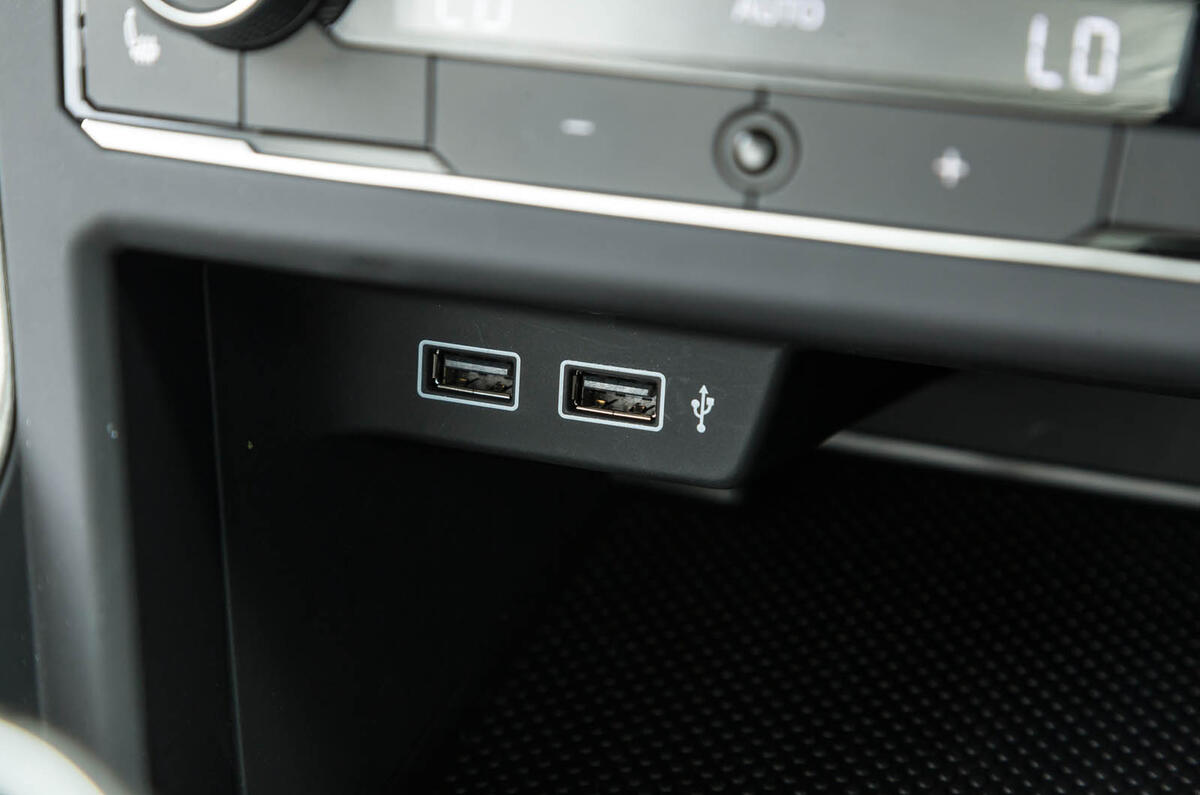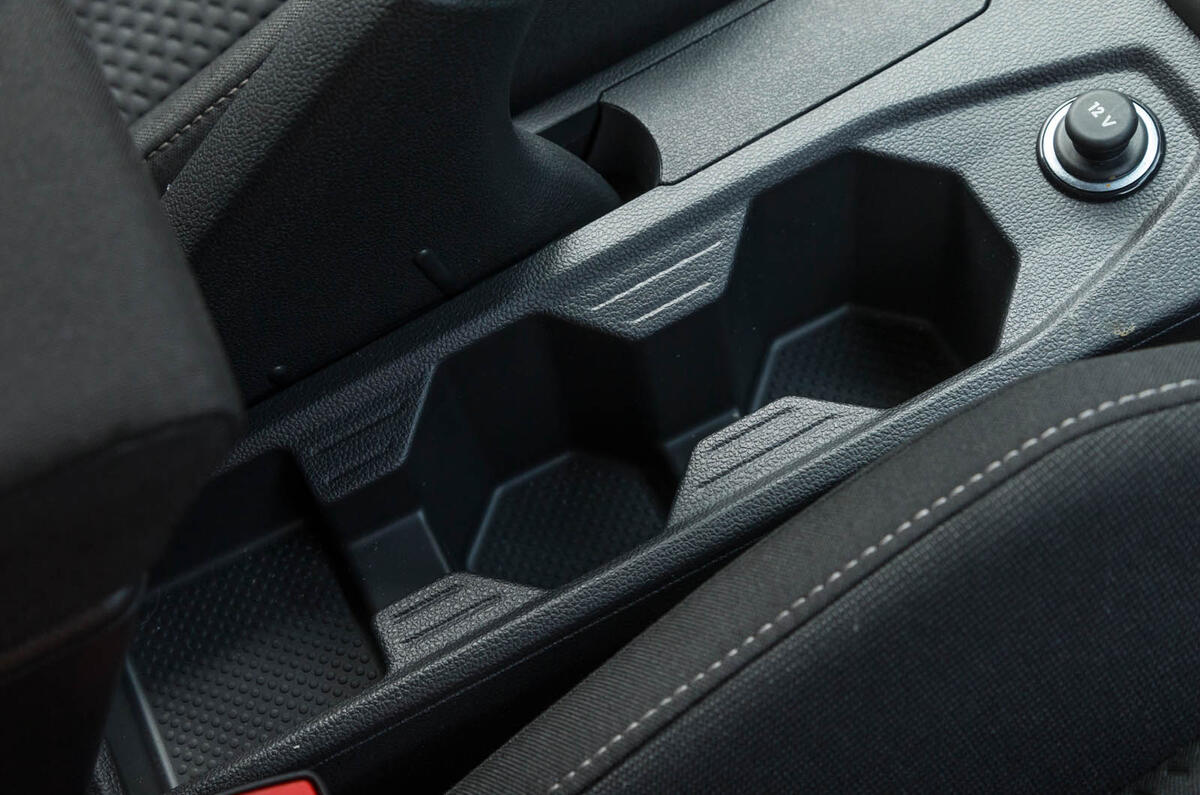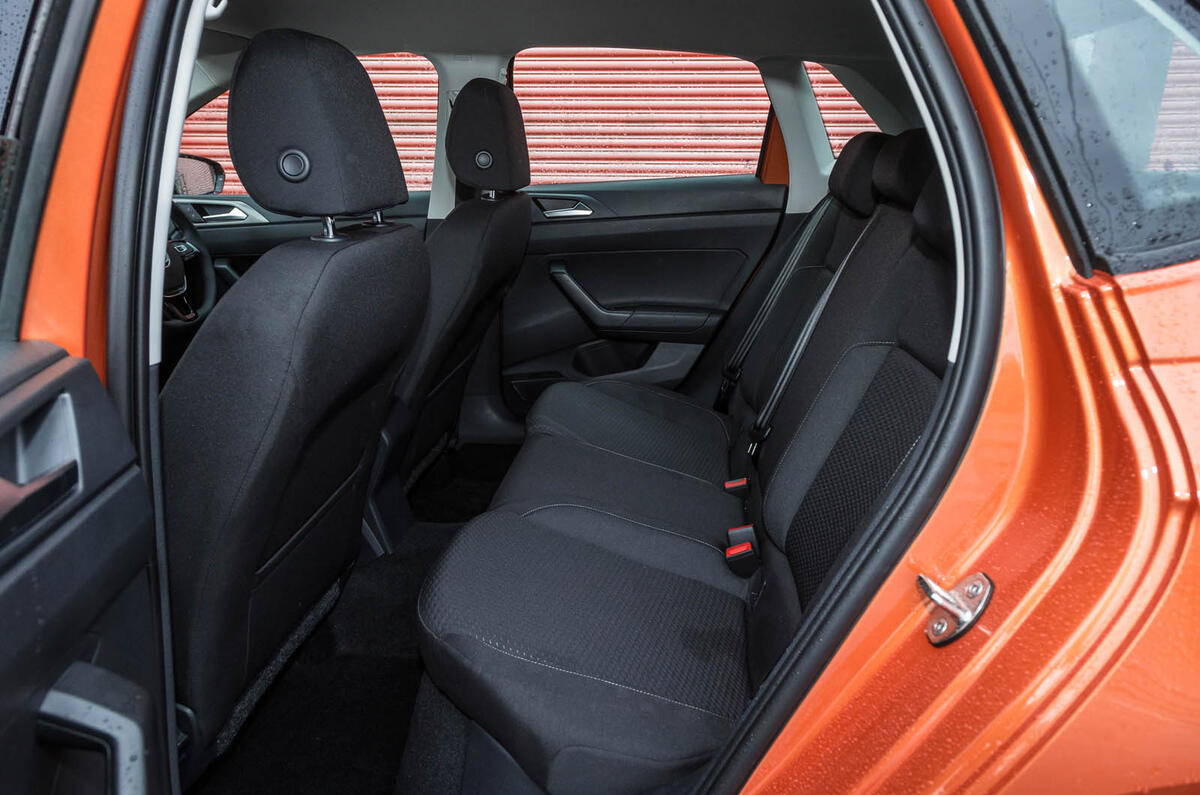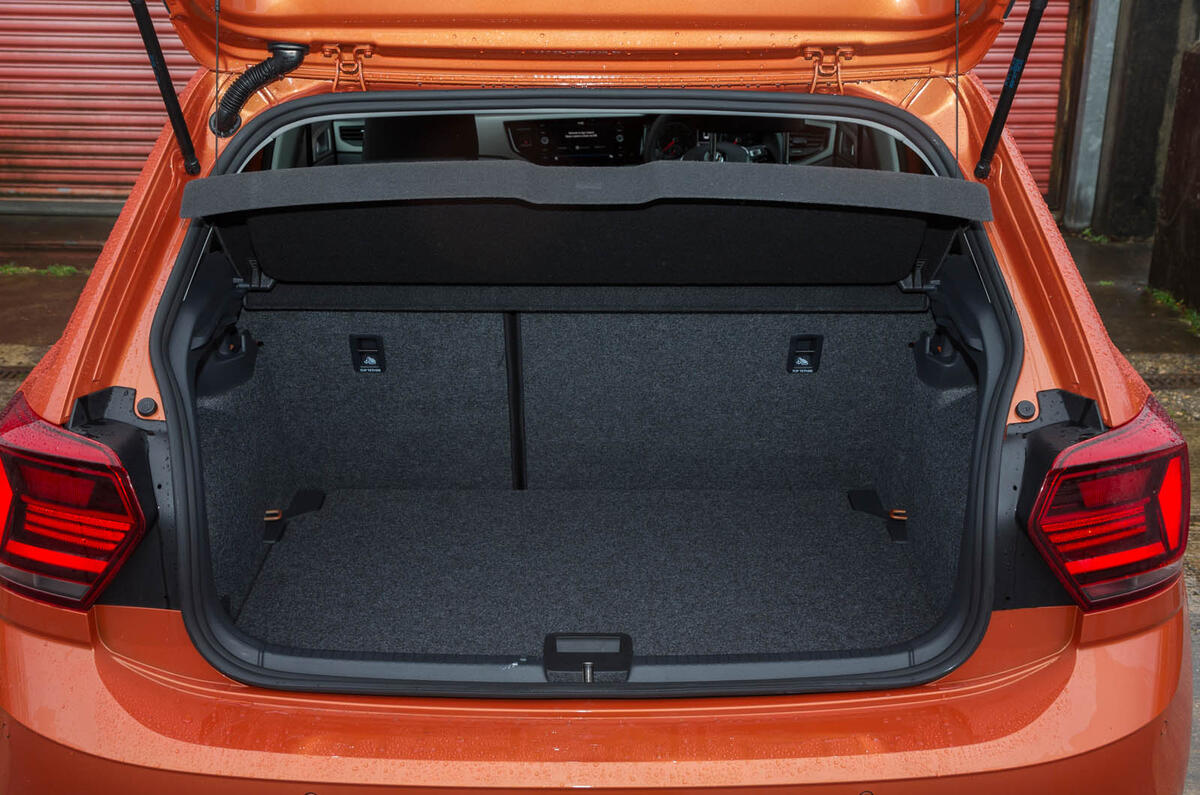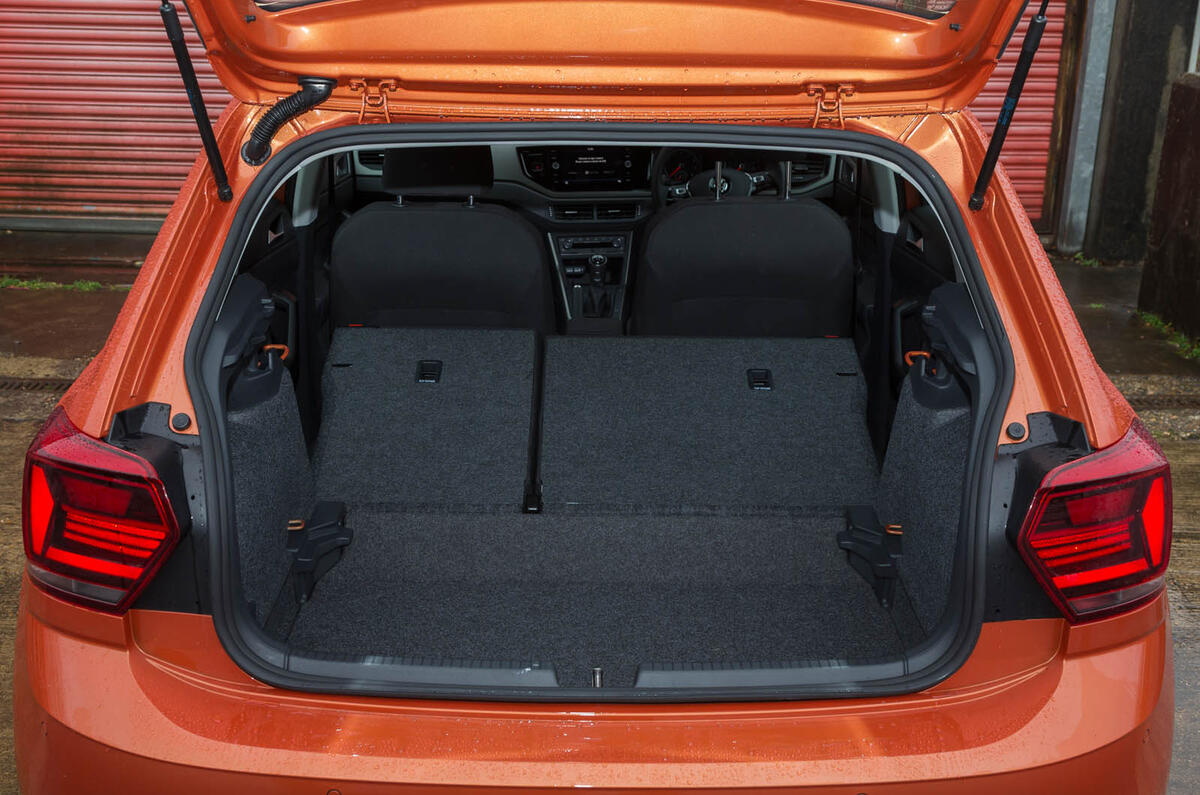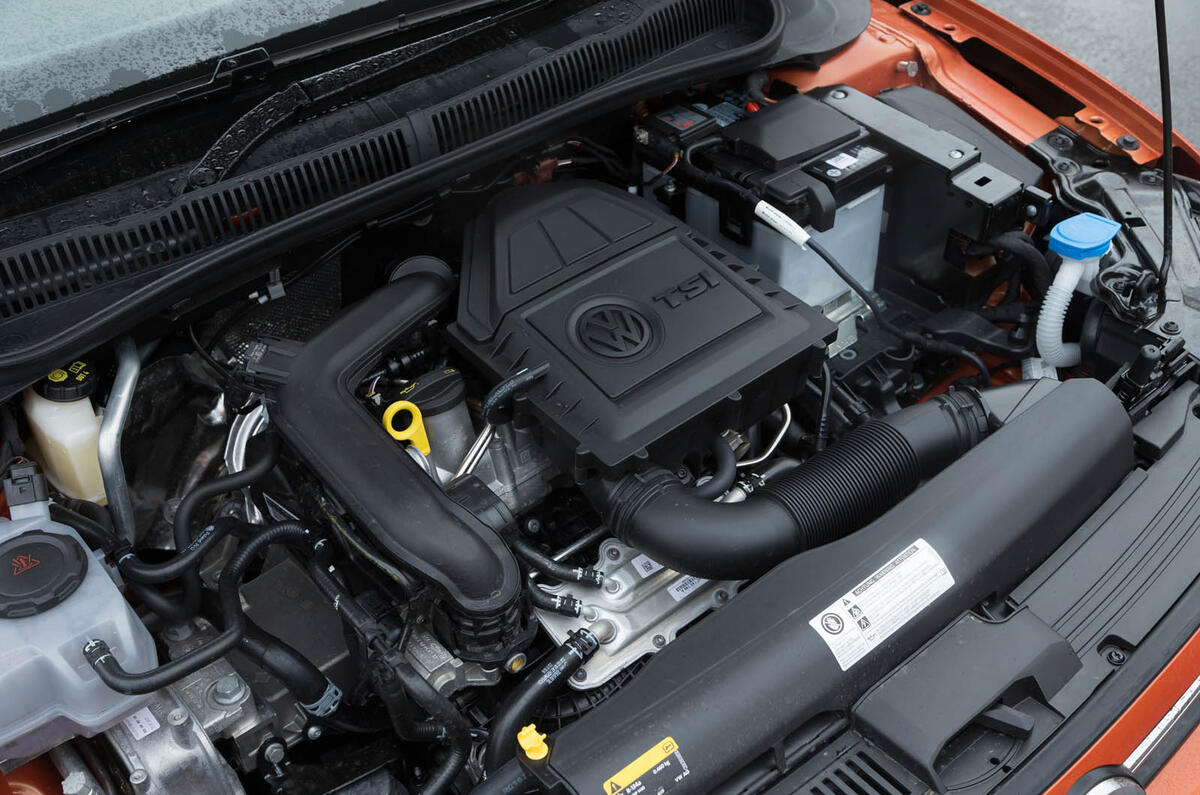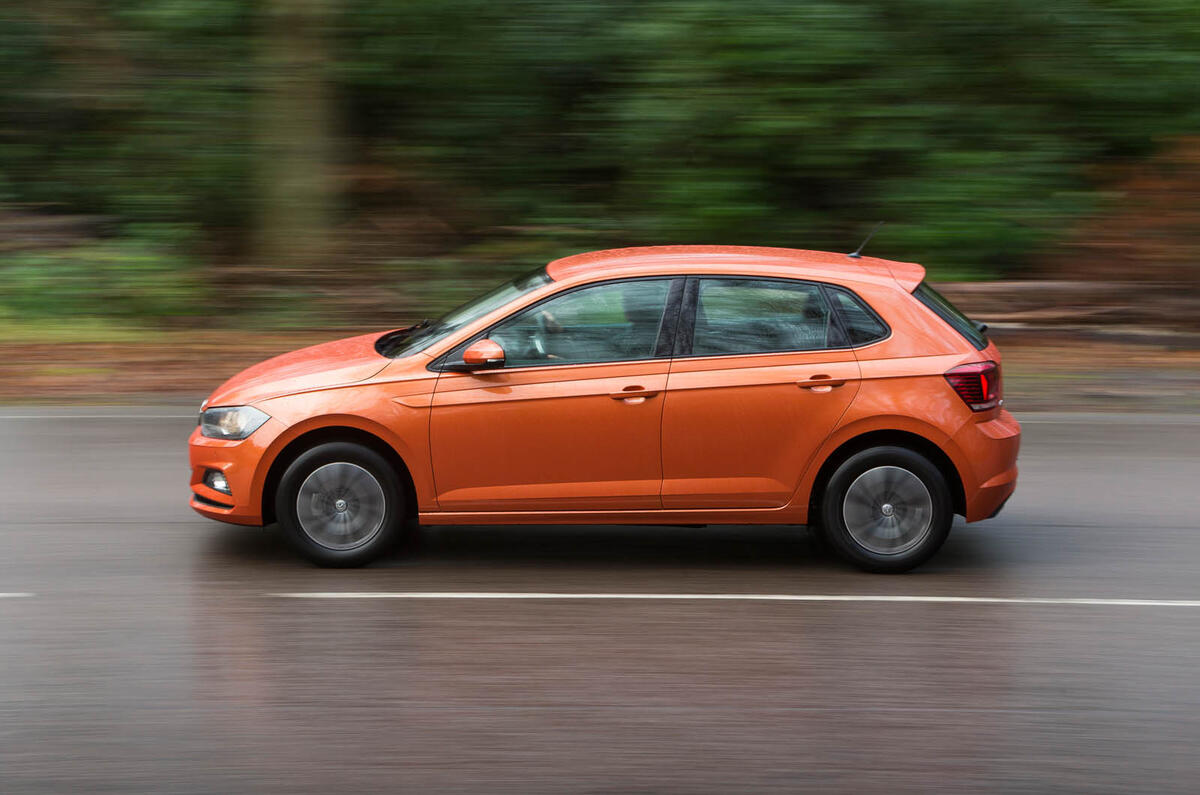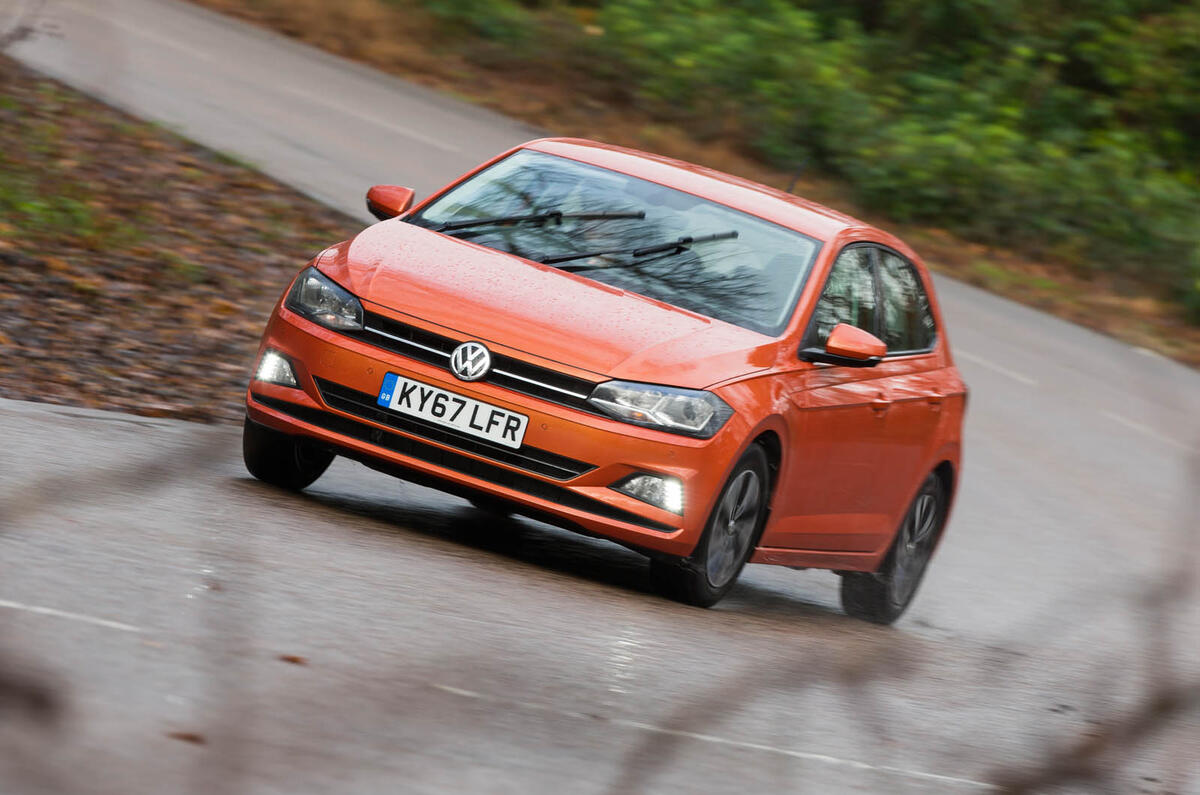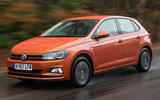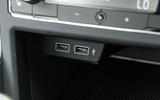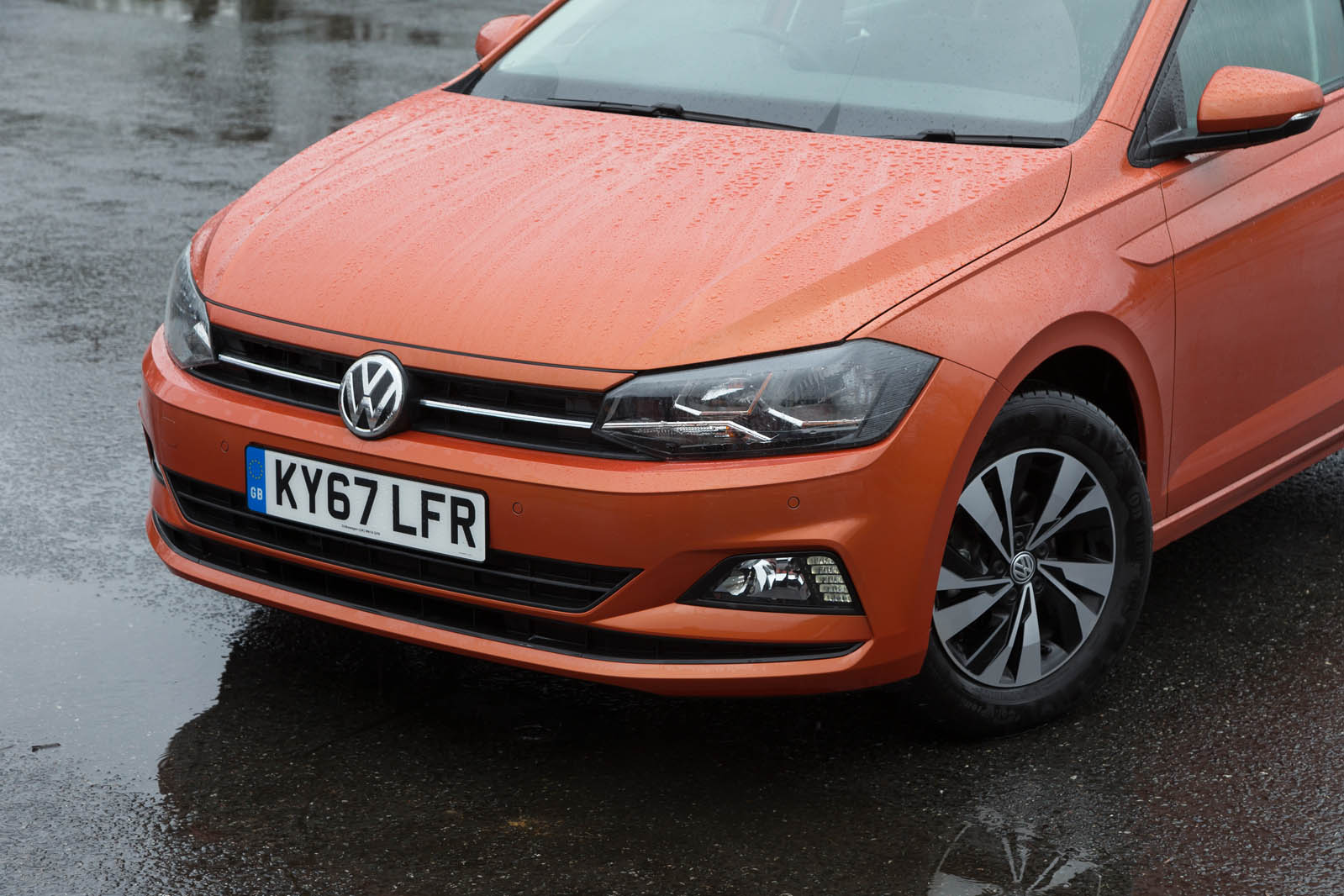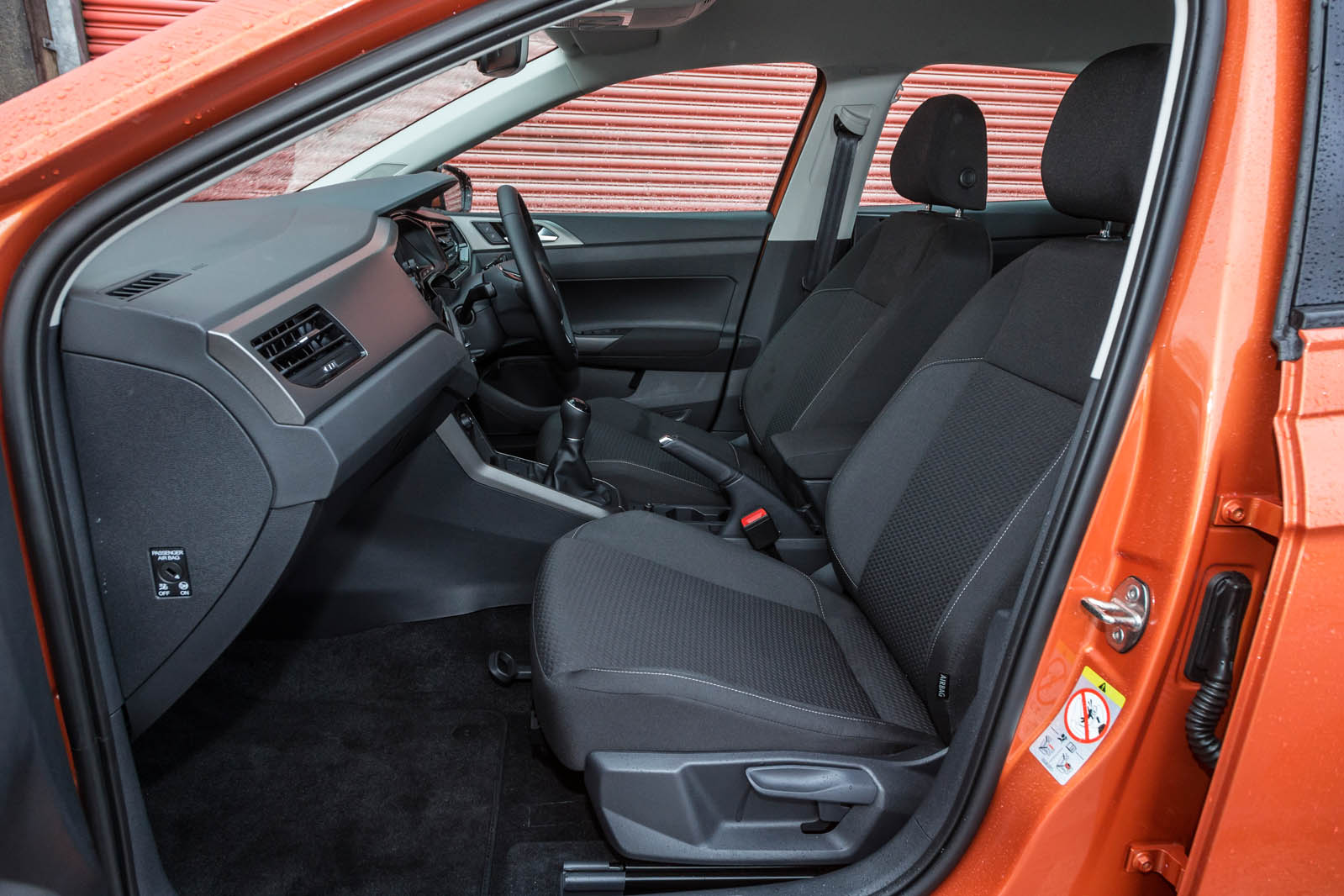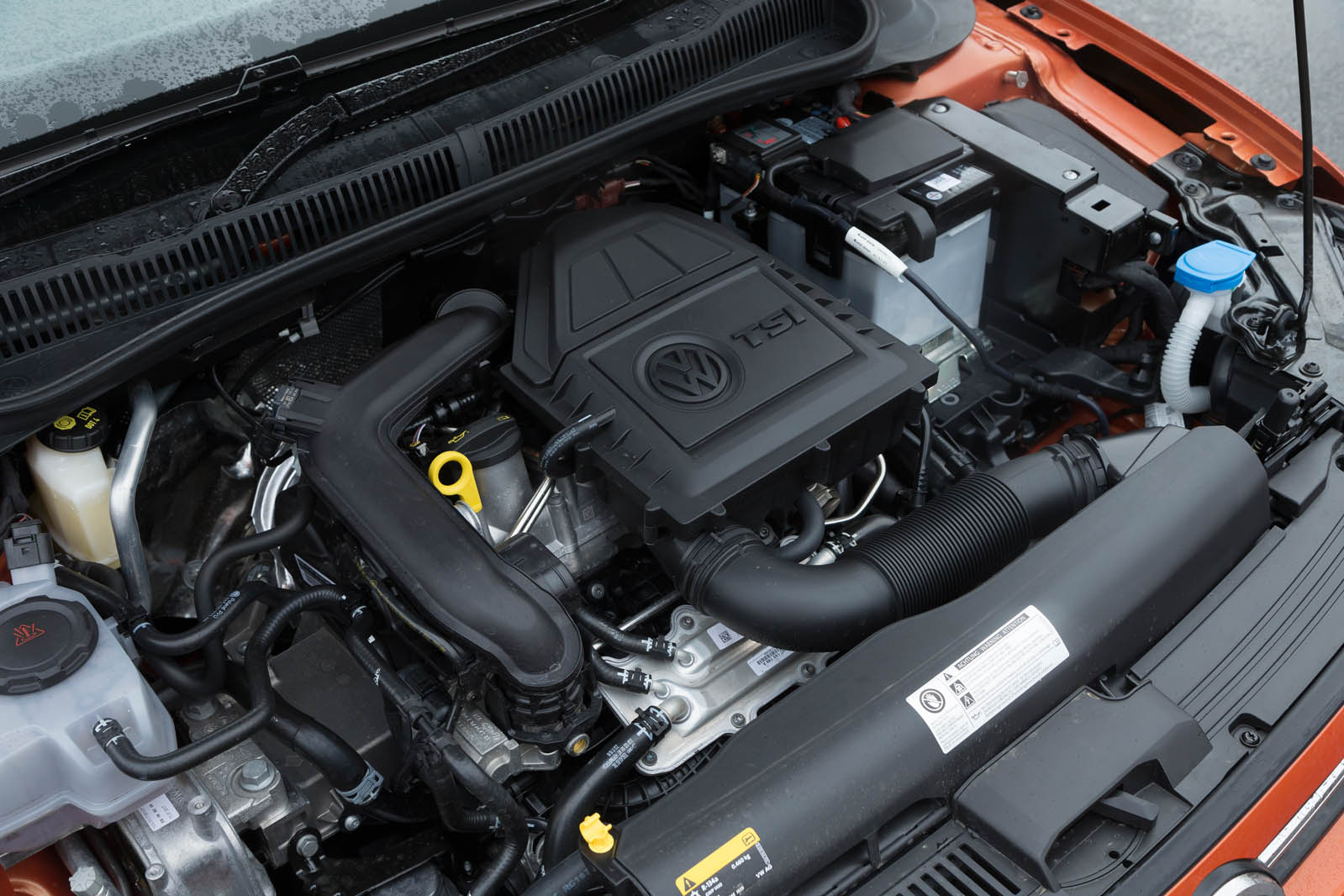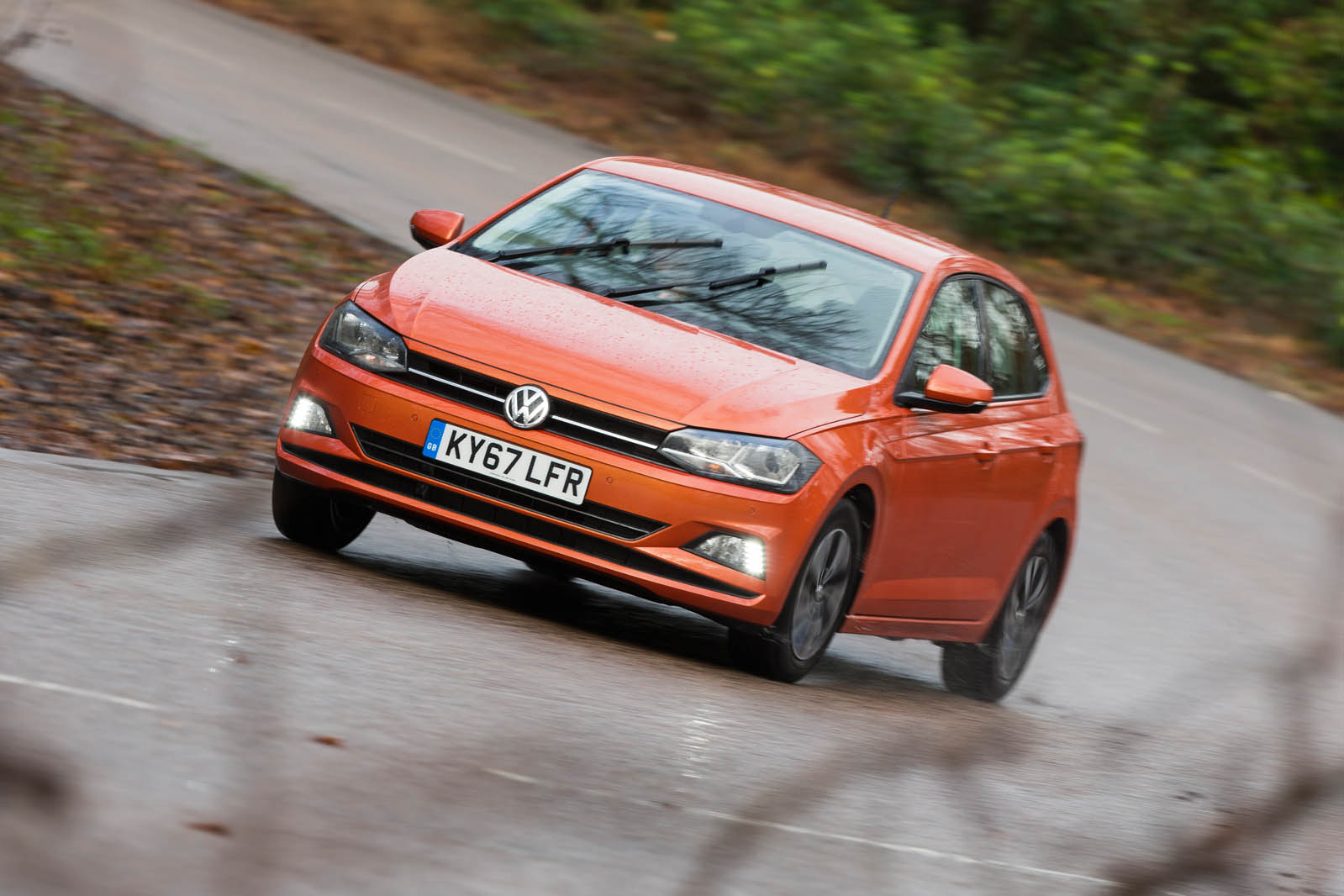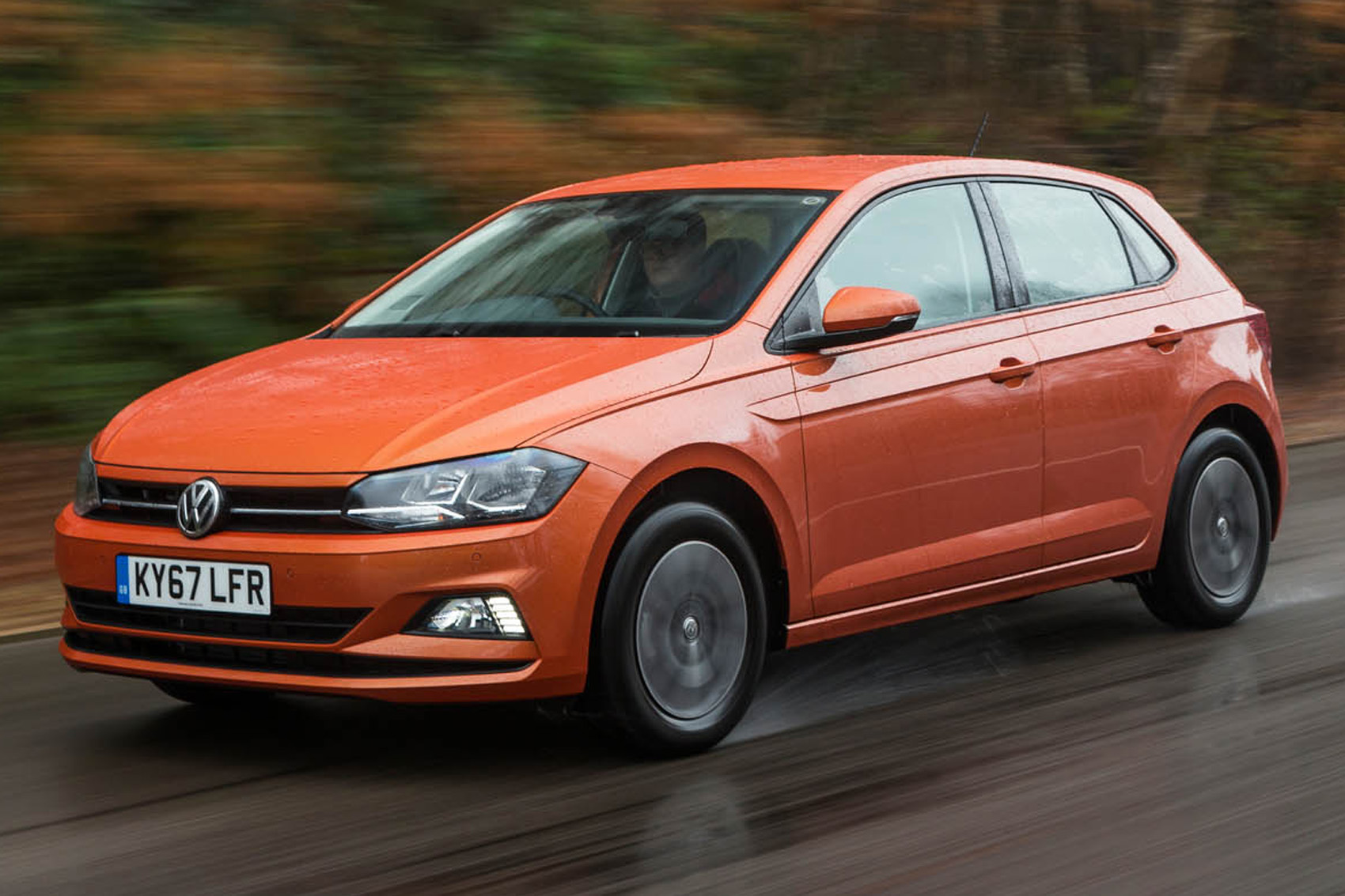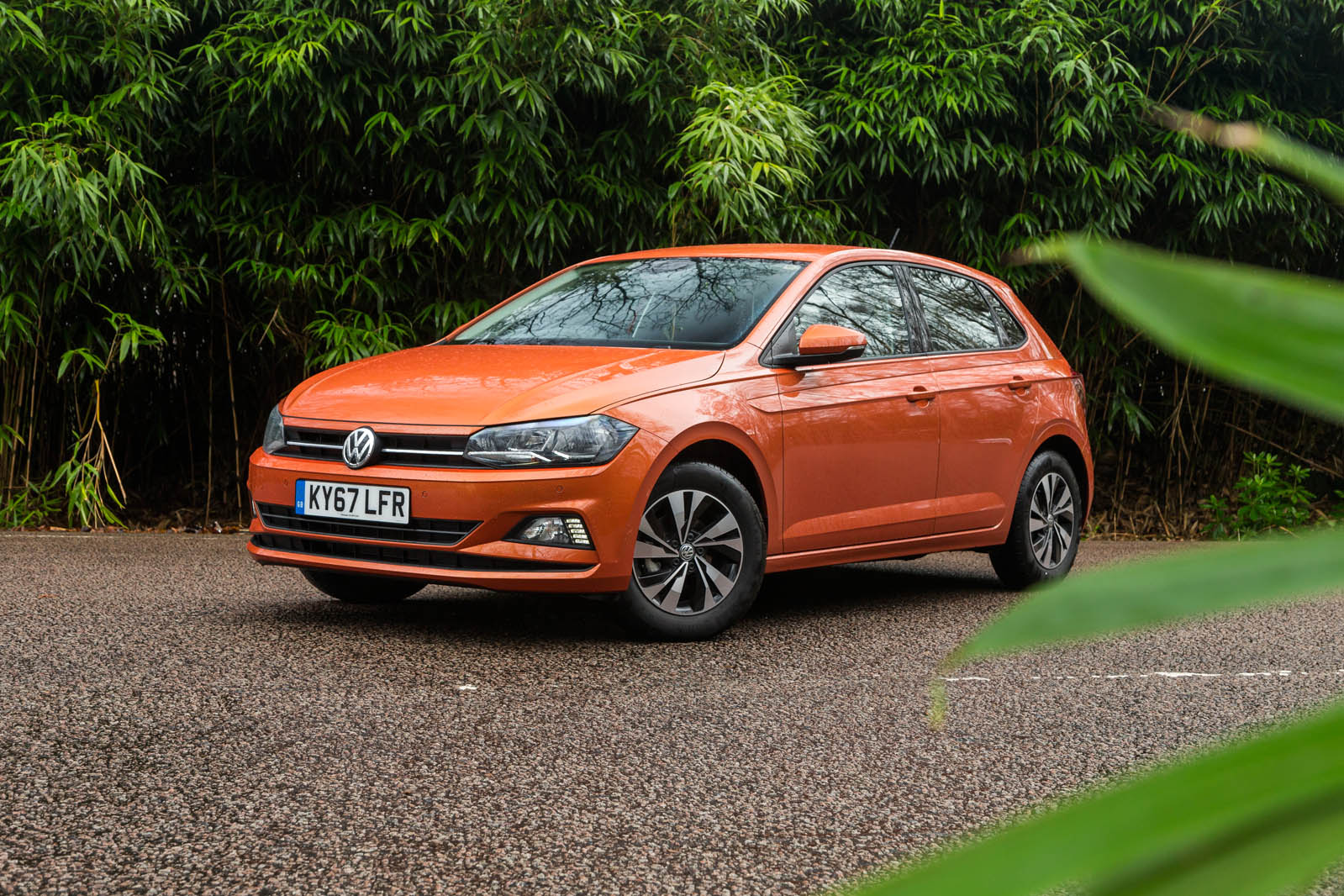The styling of the Polo’s cabin is sufficiently reserved to rob it of much in the way of wow factor, but it is unquestionably a very solidly built, well-equipped and pleasant small car in which to spend time.
As you’d expect from a VW Group product, everything feels solidly integrated, assiduously finished and fitted, and thoroughly well screwed together.
Absolutely nothing wobbles, creaks or flexes when you touch it. That Germanic sense of quality is more clearly present than in any other car in the class, save perhaps one or two with a proper premium badge.
In typical supermini fashion, VW uses hard plastics on the door cards and in the lower reaches of the cabin but they’re grained ones and certainly don’t do the interior’s quality aura any harm, while soft-touch plastics on the top of the dashboard improve tactile quality somewhat. The decorative panels on the main fascia can be finished in a number of different colours thanks to a range of optional colour packs, although a reserved Limestone Grey featured in our test car.
Opt for a more vibrant shade, such as the Energetic Orange dash-pad pack, and you’ll give the cabin a considerable visual lift. Continuing the trend of interior personalisation is a selection of upholstery patterns, which vary from trim level to trim level.
On spaciousness, the Polo is very impressive by supermini standards. There’s plenty of head room in the front, and although loftier passengers may find rear head and knee room too tight to be truly comfortable, anyone around the six-foot mark will find they fit in the back with little complaint.
If you’ve three kids to cart about, the Polo will be more than up to the task – provided they’re in booster seats. There are Isofix child seat anchorages for the outer rear seats only.
Boot space is 355 litres with the back seats in place and the adjustable floor in its lowest position, meaning that the Polo is identical to the class-leading Seat Ibiza and 62 litres more commodious than the Fiesta.
Fold the seats down and this will free up a total of 1125 litres. In short, although the Polo isn’t quite out on its own on practicality, you won’t find a more accommodating supermini.
Our test car came equipped with Volkswagen’s Composition Media infotainment system as standard.
The 8.0in touchscreen incorporated features such as: DAB radio; Bluetooth connectivity; voice recognition and Apple CarPlay and Android Auto smartphone mirroring (although you have to pay extra for the latter on entry-grade cars).
A factory-installed sat-nav system is available higher up the trim range, but if you’re willing to use your own smartphone data, the lack of one won’t prove too much of a problem.
We had no qualms about the system’s functionality, either. The display is clear and easy to read, and the touchscreen is responsive to touch and swipe gestures. Dedicated shortcut ‘buttons’ border the screen and make it that much easier to navigate the system’s various functions. They are far preferable to those units which are controlled exclusively through the touchscreen.
Likewise, it’s good to see Volkswagen sticking with proper knobs for controlling the volume and for scrolling.



